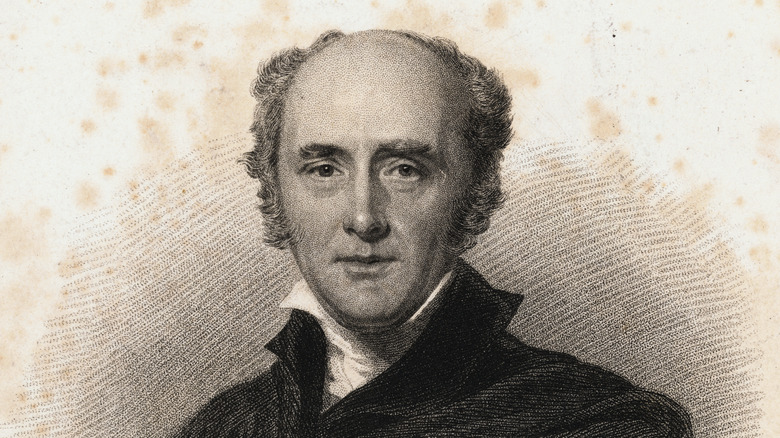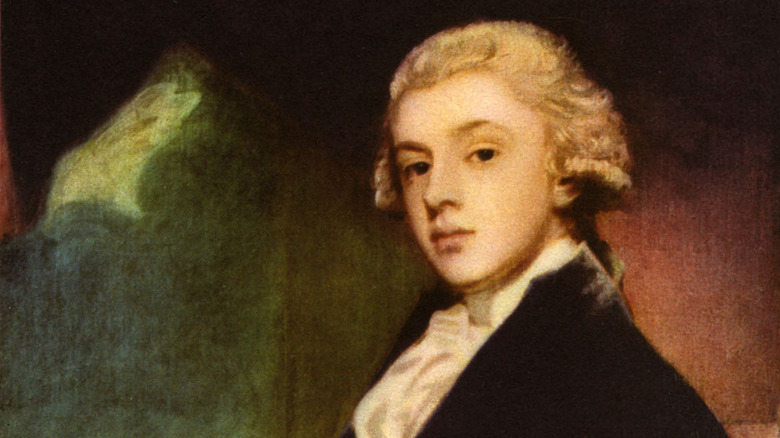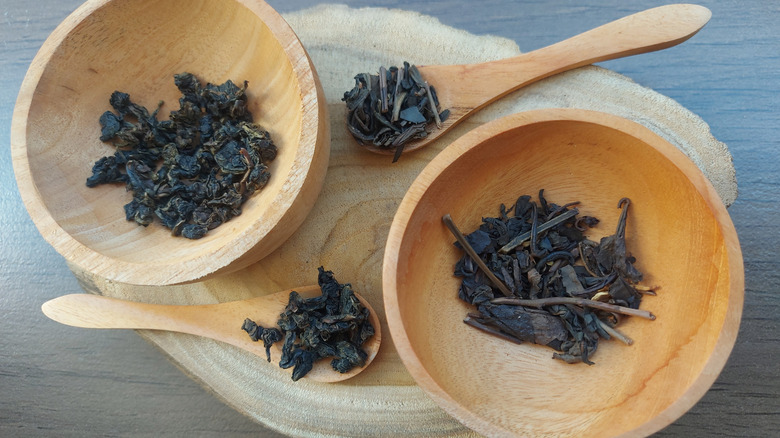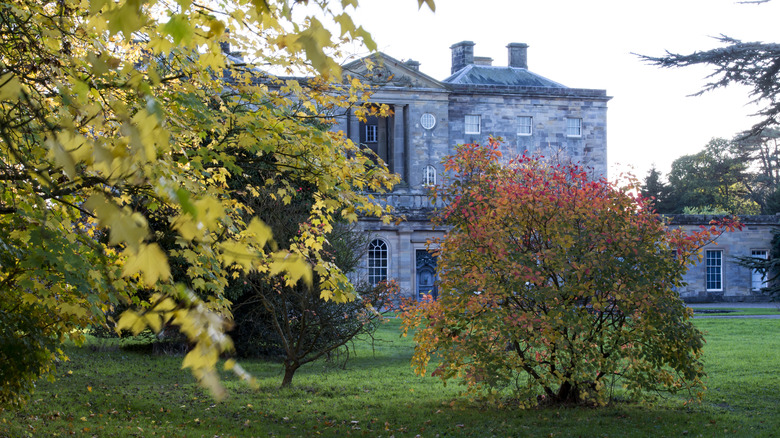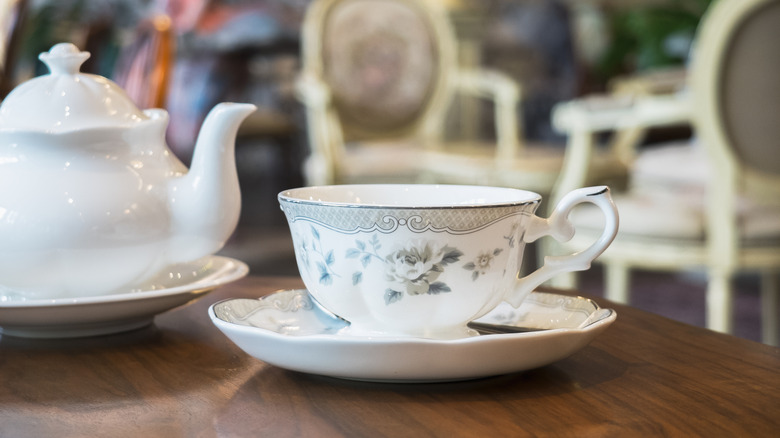Who Was Earl Grey, And Why Are We Still Drinking His Tea?
Earl Grey is one of the most popular types of tea in the world. The dark, floral, bergamot blend is a pantry staple, even among tea-adverse Americans. In England, it's second only to English breakfast tea. But who was Earl Grey, anyway? Was he a real person, or was he a made-up marketing ploy like Betty Crocker?
Historians don't know how Earl Grey tea got its name. But one thing's for sure: there really was a historical figure named Earl Grey. British politician Charles Grey, 2nd Earl of Grey, who lived from 1764 to 1845, is probably our man. And, while the actual origin of the tea is as murky as a London fog, Grey is a worthwhile namesake.
Nowadays, 18th-century English aristocrats don't always have the best rap. Colonial era England was rife with oppression and inequality. Most aristocrats were complicit — or, at least, didn't bother to help. After all, the other English Earl immortalized on café menu boards — the Earl of Sandwich — was known for his debaucherous lifestyle.
But Charles Grey went down in history as a pretty great guy. During his relatively brief stint as Prime Minister, Grey helped implement social changes that changed the British Empire (and by extension, the rest of the world) for the better. As for the tea? That's not even the best part of his legacy. It is the tastiest, though, so feel free to grab a cup before learning more about the remarkable English Earl.
Who was Earl Charles Grey?
Earl Charles Grey spent his career advocating for others. As a young man, Grey and other like-minded aristocrats founded the Society of the Friends of the People. The group's goal? Giving the lower and middle classes a voice in politics — a radical idea at the time.
Grey worked towards that goal for his entire career. In 1832, he made good on his promise with the influential Reform Act. The act didn't fix the system for good — the modern, democratic parliamentary system took over 100 years of reform — but it was a key step towards change.
His greatest achievement might be his work toward ending slavery in the British Empire, though. In 1807, Grey helped pass the Slave Trade Act, which banned Brits from buying or selling people as slaves. But the final blow to the British slave trade came while he was Prime Minister: in 1834, Grey's administration passed the Slavery Abolition Act. The act freed 800,000 people from enslavement across the Empire, and helped American abolitionists, too. The law turned Canada into a haven for refugees fleeing slavery in the South — and gave the American abolitionist movement legitimacy and hope.
Grey's legacy wasn't perfect. While he spent his career fighting for Catholics — who had few rights in England at the time — he failed to deliver. In 1834, after the issue caused a government gridlock, Grey resigned as prime minister. He retired from public life and spent the rest of his life with his wife and their 15 kids.
How was Earl Grey tea invented?
There are different theories about how Earl Grey tea was invented — or what role Charles Grey played, if any. Historians think that the tea, which blends black tea and bergamot oil, was inspired by Chinese teas. The exact recipe probably didn't come from China, though: bergamot oranges grow in Southern Italy. However, it could've been a substitute for other types of citrus, like orange blossom or neroli.
Brits were drinking bergamot teas by 1824, but the blends didn't have the best reputation. At the time, some merchants used bergamot oil to cover up the taste of low-quality tea. The bitter orange even landed British tea merchant Brocksop & Co. in hot water with the law: charges claimed that the merchant sneaked bergamot into blends to scam customers.
For decades, tea merchants Twinings and Jacksons of Piccadilly both claimed that they'd blended the original tea for the Earl. According to the Boston Tea Party Museum, a 1928 ad from Jacksons of Piccadilly states the blend was "Introduced in 1836 to meet the wishes of the former Earl Grey," adding, "the genuine blend can be obtained ... only from Jacksons of Piccadilly." But Twinings won out in the end: they currently own the Jacksons of Piccadilly brand.
Nowadays, the tea comes in many forms. Some blends double down on the bergamot by adding orange peel directly to the tea, others use artificial flavoring. It has inspired offshoots — like Lady Grey — and cafe classics like London Fog.
Why was Earl Grey tea named for Charles Grey?
The most popular — and far-fetched — story claims that a Chinese diplomat gave Grey a special orange-flavored tea after Grey saved his life. Grey asked British tea merchants to recreate it, and the new blend became a smash hit among cultured Brits. The story is probably embellished (at best), but it could hold a grain of truth. Grey helped end the British East India Company's monopoly on Chinese tea, so it's possible that he got the tea as a gift from a grateful Chinese tea merchant.
Grey's family sticks to a similar story. "Legend has it that my ancestor, the second Earl Grey, was presented with this exquisite recipe by an envoy on his return from China. He liked it so much he asked Richard Twining to recreate it for him," reads a quote from Philip Kent Grey, the Seventh Earl Grey, on the Twinings website. The tea in question? Probably Keemun — which is still used to make Earl Grey to this day — or Lapsang Bohea, a high-end black tea with a robust flavor.
Another theory points to a practical purpose. Grey lived in an area with famously hard water, which gave tea an unpleasant taste. According to some accounts, he commissioned the tea to mask the taste of the water: the acidic black tea and bergamot helped cancel out the alkali limescale. Maybe both stories are true: Grey might've liked the Chinese tea because it hid the hard water taste.
Was Charles Grey the tea's namesake at all?
But historians aren't sure if Charles Grey was the tea's namesake at all. There's no record of a tea with the name "Earl Grey" until decades after Grey's death, so some experts speculate that the tea got its name from Grey's successor. Others claim that tea merchants tacked on the "Earl" moniker to give the blend high-class cred.
If the name was a marketing scheme, it worked. By the late 19th century, Earl Grey was a luxury product. Even Queen Victoria was a fan. According to the Oxford University Press, in 1892, "Marquise de Fontenoy's Revelation of High Life within Royal Palaces" claimed, "The tea consumed by the Royal Household in England ... costs five shillings and four-pence a pound, and was for a long while known as 'Earl Grey's Mixture,' this nobleman having recommended this particular mixture to Her Majesty." However, The Oxford English Dictionary questions the claim that Charles Grey recommended the tea to Queen Victoria herself. The dictionary notes that the elderly Earl retired from public life long before 18-year-old Queen Victoria took the throne in 1837.
One thing's for sure, though. Regardless of its actual history, Earl Grey tea helps keep the memory of one of history's great men alive. So whenever you're enjoying a steaming cup of Earl Grey tea, take a moment to appreciate the real-life Earl. Grey made the world a better place — whether he had anything to do with the tea or not.
